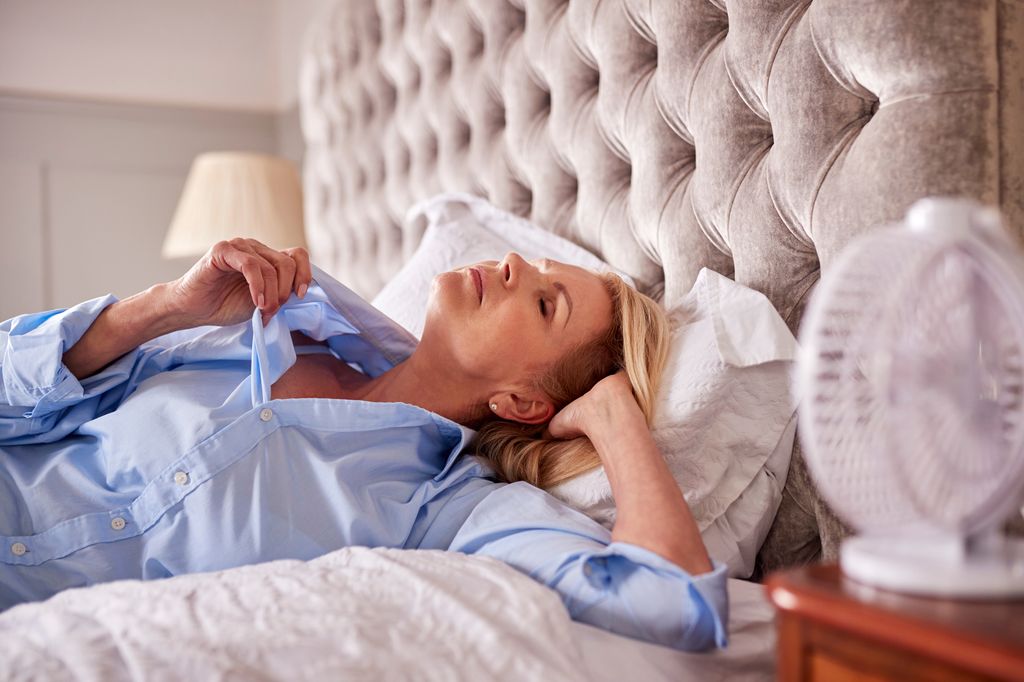There are many occasions in which we have spoken to you about the multiple symptoms that can appear during menopause. Women face a good number of signs that can appear in this complicated time. Mood changes, bone problems, vaginal dryness… and the dreaded hot flashes. They are, perhaps, one of the symptoms most commented on by many women who see how, suddenly, this sudden heat which even makes them start to sweat. But maybe you hadn’t heard of another specific type; cold flashes, a less visible ailment suffered by many women in the menopausal transition.
What are cold flashes?
“Cold flashes are a temporary sensation of tingling, chills, and cold that can occur suddenly in the body and that leaves an uncomfortable feeling. Despite being a less frequent symptom and being much less studied than usual hot flashes, they are not a symptom that should be underestimated, since in some research, up to a 29% women “They have indicated that they suffer from this discomfort,” he explains. Mireia Rocaco-founder of Domma and menopause expert.
They are not a symptom that should be underestimated, since in some investigations, up to 29% of women have indicated that they suffer from this discomfort.
Why do they occur?
Domma’s team points to the existence of two possible explanations for cold flashes.
- On the one hand, once again they are to blame hormones. during menopause a drop in estrogen occurs, which causes the hypothalamus (body temperature regulating center) to become more sensitive to small changes in body temperature. How does it act? Overreacting to these and causing a change in temperature, which is what leads to that hot or cold flush.
- On the other hand, it has also been observed that after a hot flash occurs, many women experience this sensation of “cold” because the hot flash causes the blood vessels near the surface of the skin dilate to try to get rid of the heat and, once this happens, the body temperature drops very quickly, the sensation of cold appearing.
Hot flashes, a problem also in the cold months
Due to its relationship with heat, it seems that hot flashes are a problem that is worse in summer. But the truth is that also in the cold months they can become an unwelcome companion. “In winter it might seem like hot flashes are not a problem, but in reality they are, because when the hot flash ends, the sudden change in temperature What the woman feels leaves her with an intense sensation of cold and even chills. And, furthermore, she is often drenched in sweat, which still makes her feel more discouragedespecially during the night for these night sweats”Roca adds.
Fluctuations between cold and heat in a woman’s daily life during the climacteric are very common.
Going from cold to heat, an unpleasant sensation
It is important to keep in mind that these fluctuations between cold and heat in a woman’s daily life during the climacteric are very common, which makes it extremely difficult for her to find a solution. feeling of thermal comfortwhich can affect the quality of life of the woman, who may go from wearing a wool jacket to a short-sleeved T-shirt at the moment the hot flash appears. “During menopause, a woman may feel that the temperature in the office or at home is adequate. After a little while, suddenly feel hot and open the window. Then being cold, getting overdressed and sweating again. Then, chills again… This is obviously not a comfortable situation, but it can be alleviated with appropriate treatment,” adds Roca. Of course, in addition to menopause, the perception of cold and heat is not the same for all women and depends on other factors – body weight, diet, lifestyle, medication, other pathologies… -.
What solutions are there for hot flashes?
We must try to find remedies. In this sense, the menopause expert emphasizes that these discomforts caused by the menopause can be relieved by a specific treatment for women in menopausal transition who provide adaptogens and essential nutrients to regulate the hormonal ups and downs of the climacteric. Furthermore, “foods that contain phytoestrogens and other substances that serve as natural hormones, such as flax seeds, peas, soybeans, bananas, etc. They are very beneficial at this stage,” says Cristina Martínez, co-founder of Domma. It is advisable to ask our gynecologist about the options that will be best in our specific case.

